What is scrap metal art?
Scrap metal art is a unique and fascinating form of expression that transforms discarded metal into stunning works of art.
From sculptures to garden decor, there’s no limit to the creativity that can be unleashed through this medium.
Whether you’re an aspiring artist, DIY enthusiast, or just looking for a new hobby, here’s a beginner’s guide to get started with making scrap metal art.
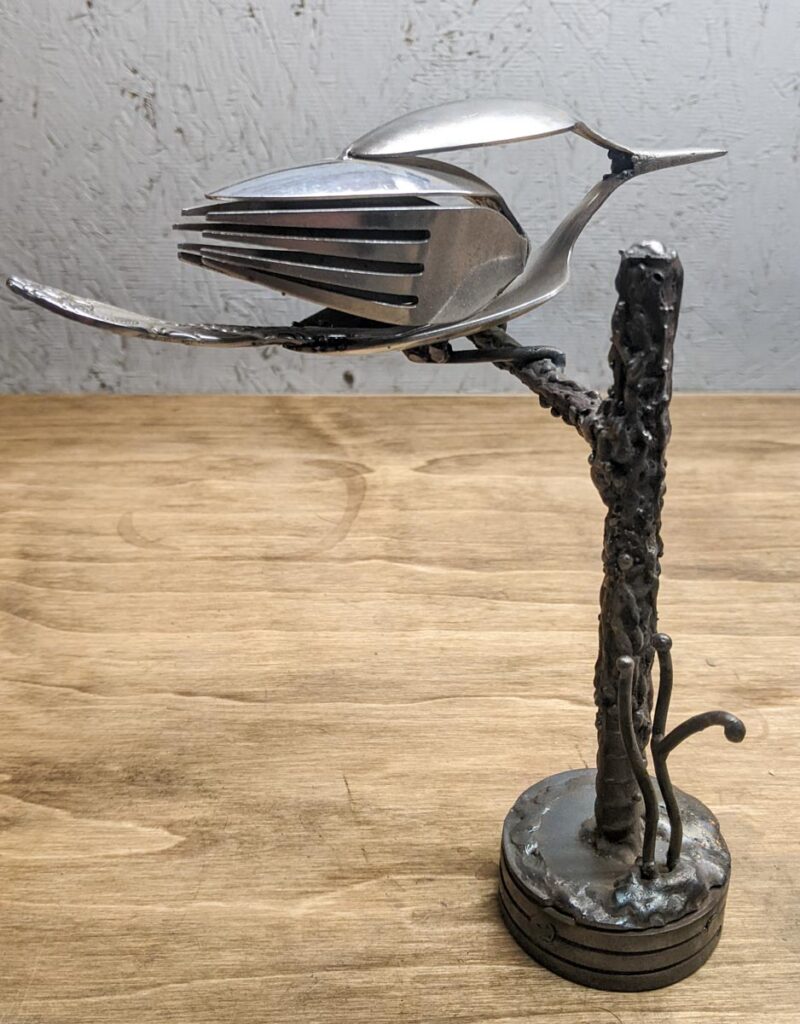
This page contains affiliate links in which we receive a small commission at no additional cost to you. As an Amazon Associate I earn from qualifying purchases.
The History of Scrap Metal Art
The history of scrap metal art can be traced back to the early 20th century, when artists and sculptors first began to experiment with using discarded metal scraps as a medium for their work. During this time, the rise of industrialization and the increased use of metal in manufacturing and construction led to a surplus of discarded metal scraps, which artists began to collect and use in their work.
In the 1920s and 1930s, artists such as Pablo Picasso and Joan Miró began to incorporate scrap metal into their works, often incorporating the rusty, weathered appearance of the metal into their pieces to create a sense of decay and industrialization.
In the post-World War II era, artists such as David Smith and Alexander Calder began to create large-scale sculptures made from discarded metal, which became an important part of the Abstract Expressionist movement. These artists often incorporated salvaged industrial materials such as steel beams and gears into their works, using these materials to create abstract forms and structures that reflected the technological advancements of the time.
Today, scrap metal art has evolved into a vibrant and diverse field, with artists working in a variety of styles and mediums to create works that range from abstract sculptures to functional objects such as furniture and lighting fixtures.
The use of discarded metal scraps in art continues to be an important way for artists to reflect on the impact of industrialization, technology, and the environment, and to create works that are both aesthetically pleasing and environmentally sustainable.
Steps to Creating Scrap Metal Art
Step 1: Gather Your Tools and Materials
The first step in creating scrap metal art is to gather the right tools and materials. You’ll need a variety of metal scraps, such as steel, aluminum, or copper, and a range of tools, including metal cutting saws, pliers, and welding equipment. If you’re just starting out, you may want to invest in some basic tools, such as metal snips, pliers, and a hammer, to get started.
Step 2: Plan Your Piece
Before you start creating your scrap metal art, it’s important to have a clear idea of what you want to make. Consider the size and shape of your piece, as well as the type of metal you want to use. You may also want to consider the overall design and theme of your piece, as well as any special techniques or tools you may need.
Step 3: Cut and Shape Your Metal
Once you have a clear plan in mind, it’s time to start cutting and shaping your metal. Start by cutting your metal scraps into the shapes and sizes you need for your piece. You can use metal cutting saws or snips to achieve the desired shapes. Next, use pliers and other tools to bend and shape the metal as needed. Check out this article for other metal cutting tools!
Step 4: Weld the Pieces Together
When your metal pieces are cut and shaped, it’s time to start welding them together. Welding is a process that uses heat and pressure to fuse two pieces of metal together. This is an important step in creating a strong, stable structure for your scrap metal art piece. If you’re new to welding, it’s important to start with a basic welding technique, such as MIG welding, and gradually work your way up to more advanced techniques.
Step 5: Finish and Protect Your Piece
The final step in creating scrap metal art is to finish and protect your piece. You may want to add a coat of paint or primer to protect your metal from rust and other forms of corrosion. You may also want to consider adding a clear coat of protective finish, such as a clear polyurethane, to ensure that your piece lasts for years to come.
Tools for Making Scrap Metal Art
Here is a list of tools that are commonly used in the creation of scrap metal art:
- Metal cutting saws: Used to cut metal scraps into the desired shapes and sizes.
- Metal snips: Used to cut metal scraps into smaller pieces and intricate shapes. Crescent makes the Bulldog Snips that are well suited for thicker metal.
- Pliers: Used to bend and shape metal scraps into the desired form.
- Hammers: Used to shape metal scraps and add texture to the surface.
- Welding equipment: Used to fuse two pieces of metal together to create a strong, stable structure.
- Welding helmet: Used to protect the welder’s face and eyes from the intense light and heat produced during the welding process. This is a good budget friendly option from Yeswelder
- Welding gloves: Used to protect the welder’s hands from the heat and sparks produced during the welding process.
- Grinders: Used to smooth and shape metal scraps and remove any rough edges. Our favorites are from Bosch and Metabo HPT
- Files: Used to fine-tune the shape of metal scraps and remove any sharp edges.
Note: The specific tools you’ll need for your scrap metal art project will depend on the type of project you’re working on, and your personal preferences and skill level.
Where to find Material for Scrap Metal Art?
Material for scrap metal art can be found in many places. Check out our guide to finding scrap metal for a more in depth look.
- Metal can be found at the curb on garbage night, just remember you’ll be competing with scrappers.
- You can visit fab shops and machine shops and ask for their scraps and cut offs (often called “drops”). They may not be free, but they are often cheap.
- Garage sales can be good sources of metal if you think outside of the box and look for buckets of nuts, bolts, and other assorted metal items.
- Swap meets are a great source of interesting pieces and parts. Think gears, light housings, and springs.
- Second hand stores often have very cheap silverware. You can also find décor, lamps, cookware, and other metal objects to use.
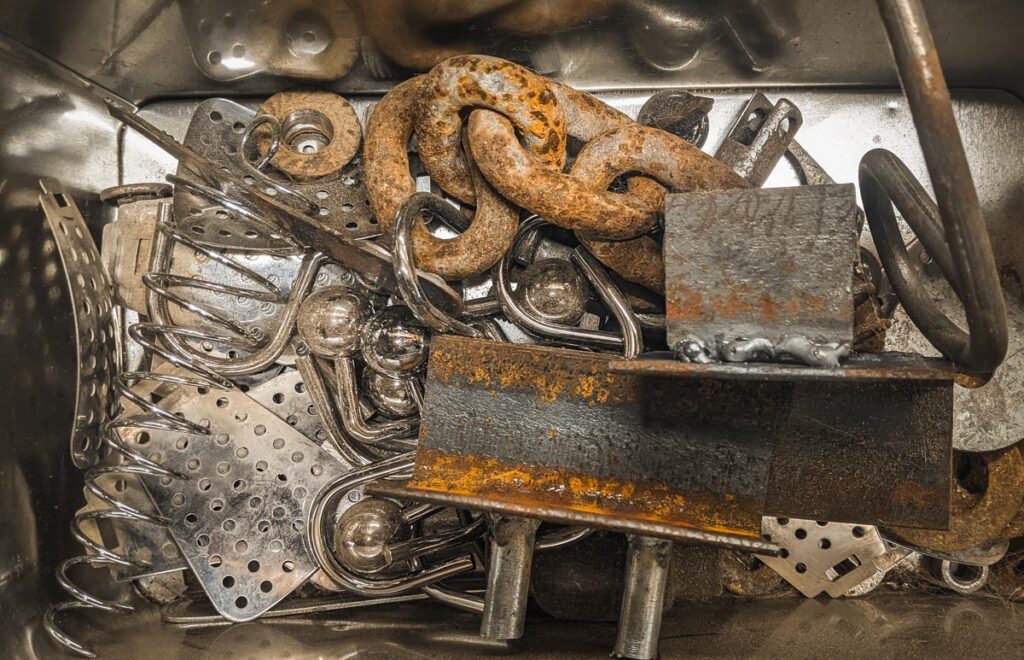
Silverware is a great place to start. It is cheap, readily available, bendable, and easy to work with. You can weld silverware with standard steel welding wire. Just keep in mind the weld will rust over time, while the rest of the silverware will not. Stainless flux core wire is also available, although it is fairly expensive compared to normal steel wire.
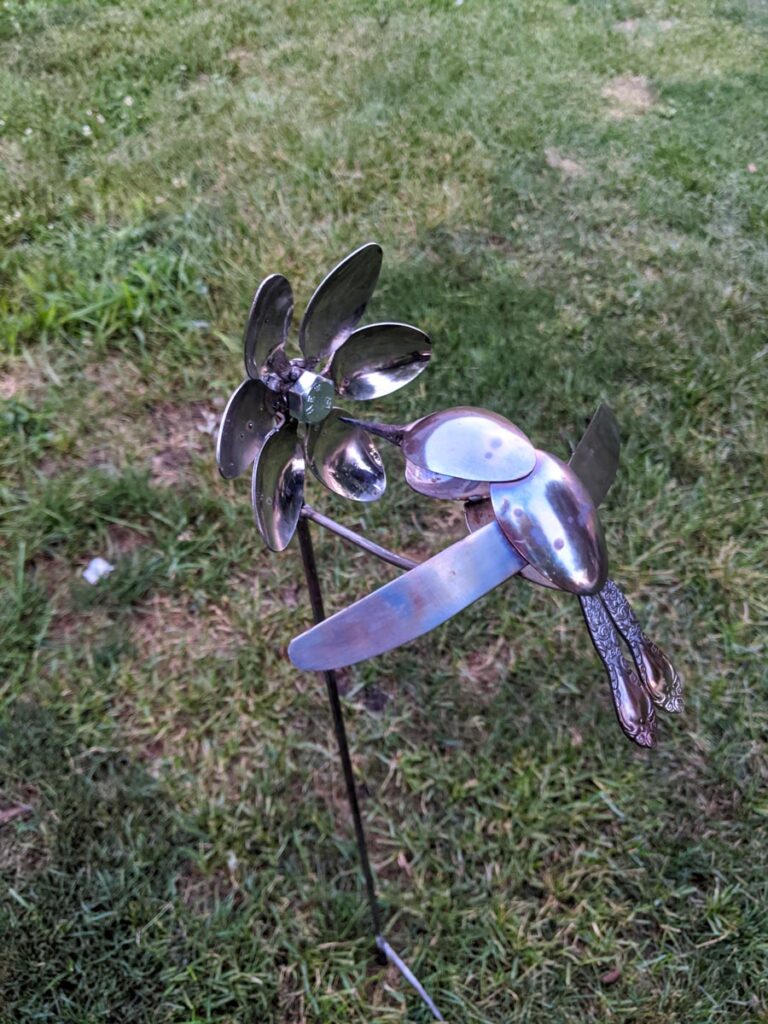
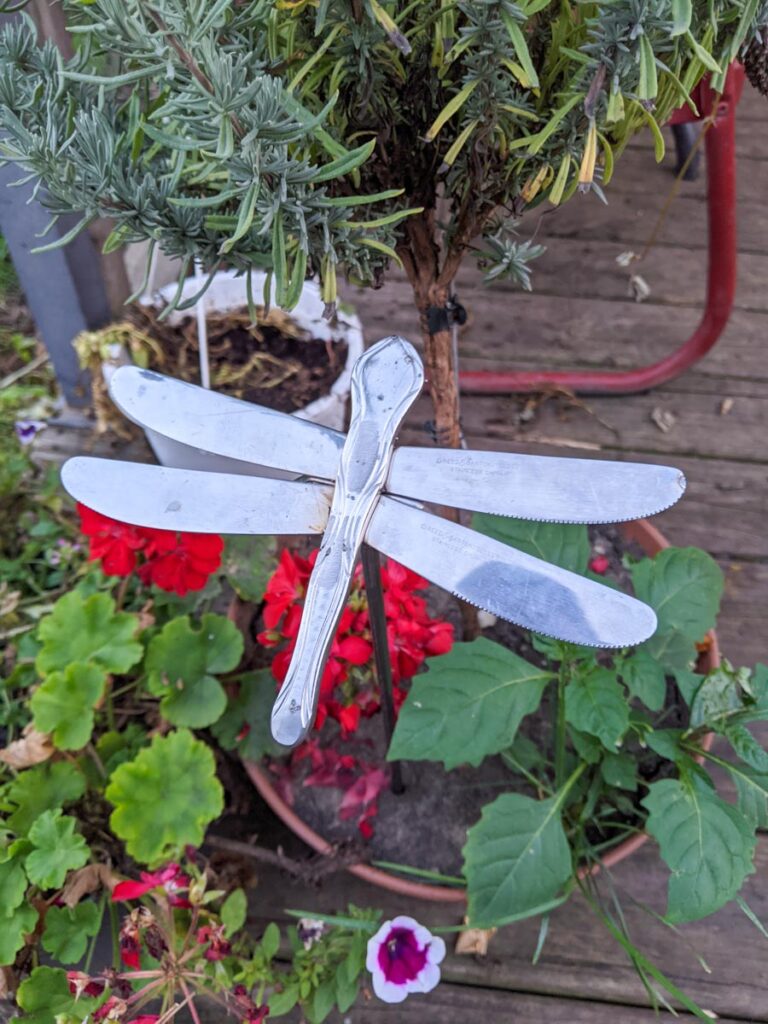
Scrap Metal Art Safety
Creating scrap metal art can be a rewarding and fulfilling experience, but it is important to take safety precautions to prevent injury and protect yourself while working with metal scraps. Here are some safety tips to keep in mind:
- Wear protective gear: When working with metal scraps, it is important to wear protective gear, such as gloves, safety glasses, and a face mask to protect your eyes, skin, and lungs from metal particles, dust, and sparks.
- Use caution when welding: Welding is a common technique used in scrap metal art, but it can be dangerous if proper precautions are not taken. Be sure to use a welding helmet to protect your face and eyes from the intense light and heat produced during the welding process, and wear welding gloves to protect your hands from heat and sparks.
- Avoid sharp edges: Metal scraps can have sharp edges that can cause cuts and puncture wounds. Always wear gloves when handling metal scraps and take care to file or grind down any sharp edges before handling the metal.
- Store metal scraps properly: Metal scraps can be heavy and can cause injury if they fall or if you accidentally bump into them. Store metal scraps in a secure, easily accessible location and take care to arrange them in a safe and organized manner.
- Familiarize yourself with the tools: Before using any tools, be sure to familiarize yourself with their proper use and safety guidelines. Read the instructions carefully, and never use a tool for a purpose for which it was not intended.
By following these safety tips, you can enjoy the process of creating scrap metal art while keeping yourself and others safe. Remember, safety should always be a top priority when working with metal scraps and other materials.
Famous Scrap Metal Artists
Here are some famous scrap metal artists who have made a significant impact in the field of scrap metal art:
- David Mach: A Scottish sculptor who is best known for his large-scale installations made from found materials, including scrap metal. His works are often inspired by pop culture and political events.
- Mike Ross: An American sculptor who specializes in creating sculptures made from discarded metal and other found materials. His works often feature animals, and are inspired by nature and the environment.
- Rebecca Horn: A German sculptor and performer who is known for her works made from scrap metal and other found materials. Her works often feature organic forms and are inspired by nature, science, and technology.
- Tom Price: A British sculptor who creates large-scale sculptures made from discarded metal scraps. His works often feature abstract shapes and forms, and are inspired by nature, the environment, and the industrial landscape.
These are just a few of the many talented artists who are working in the field of scrap metal art today. There are many more artists who are creating beautiful and inspiring works from discarded materials, and the field is constantly evolving and growing.
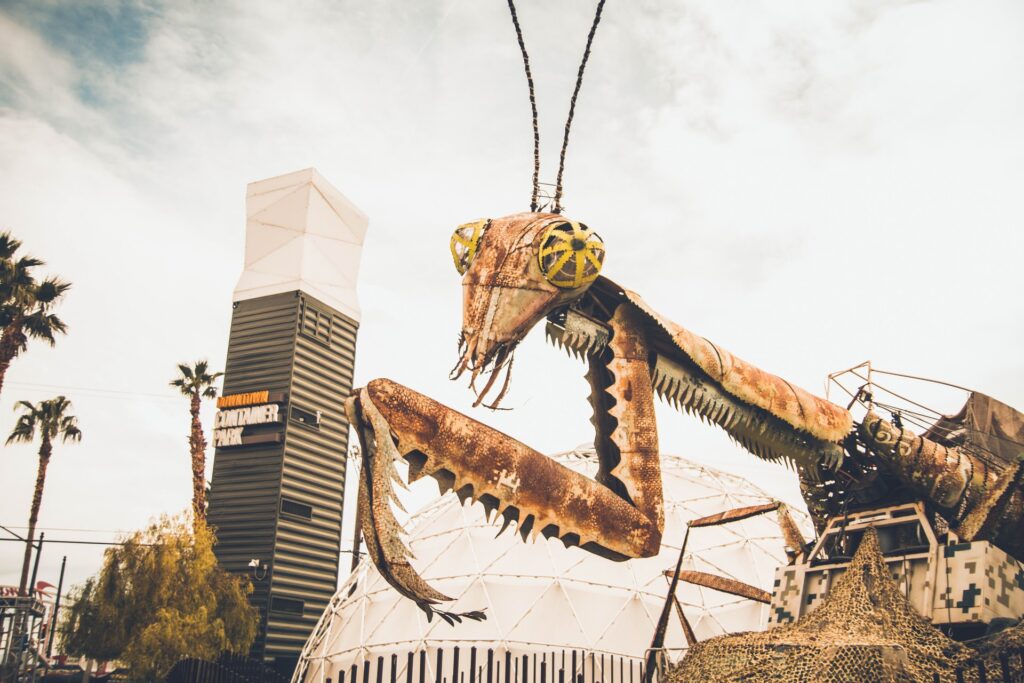
Conclusion
In conclusion, making scrap metal art is a fun and rewarding hobby that allows you to turn discarded materials into beautiful works of art. Whether you’re a seasoned artist or a beginner, the key to success is to have a clear plan, the right tools and materials, and a passion for creativity. So, what are you waiting for? Get started on your first scrap metal art project today!
Check out our post on 10 Small Welding Projects for Beginners for more welding project ideas. If scrap metal art doesn’t interest you, find another garage hobby to try.
